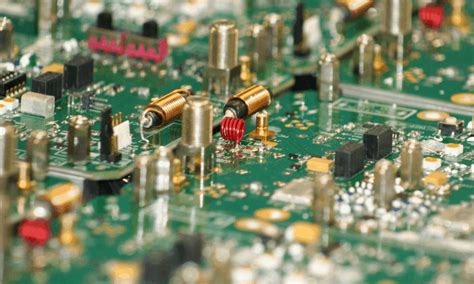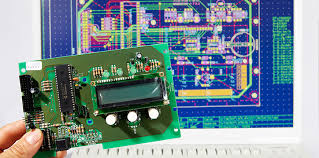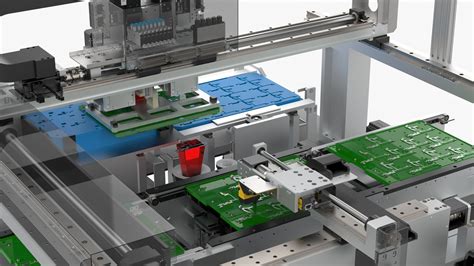The Failure Mechanisms Behind Poor Solder Wetting Phenomena
Abstract
Poor solder wetting, commonly referred to as “non-wetting” or “dewetting,” is a critical defect in soldering processes that significantly impacts the reliability of electronic assemblies. This paper explores the underlying failure mechanisms contributing to poor solder wetting, including surface contamination, oxidation, intermetallic compound (IMC) formation, flux inefficiency, and thermal profile mismanagement. By analyzing these factors, we propose mitigation strategies to enhance solder joint integrity in surface mount technology (SMT) and through-hole soldering applications.
Keywords: solder wetting, non-wetting, intermetallic compounds, flux activity, thermal management, surface contamination
1. Introduction
Solder wetting is a fundamental process in electronics manufacturing, where molten solder forms a metallurgical bond with component leads and printed circuit board (PCB) pads. Poor wetting leads to weak solder joints, increasing the risk of electrical failures and mechanical fractures. Understanding the root causes of this defect is essential for improving soldering quality in high-reliability applications.
2. Fundamentals of Solder Wetting
Wetting occurs when molten solder spreads over a metal surface due to favorable surface energy interactions. The process depends on:
- Surface cleanliness (absence of oxides and contaminants)
- Thermal conditions (adequate temperature for flux activation and solder flow)
- Metallurgical compatibility (formation of stable IMCs)
When wetting fails, the solder either retracts (dewetting) or fails to spread (non-wetting), leaving exposed base metal.

3. Key Failure Mechanisms
3.1 Surface Contamination
Contaminants such as oils, dust, or residual chemicals disrupt solder adhesion. Common sources include:
- Fingerprints (organic residues)
- Silicone contamination from mold release agents
- Inadequate PCB cleaning post-fabrication
Mitigation:
- Use plasma cleaning or alcohol-based degreasers.
- Implement strict handling protocols (gloves, cleanroom practices).
3.2 Oxidation of Surfaces
Metallic surfaces (Cu, Ni, Sn) oxidize when exposed to air, forming barriers (e.g., Cu₂O, SnO₂) that repel molten solder.
Mitigation:
- Store PCBs and components in nitrogen cabinets.
- Use no-clean fluxes with strong reducing agents.
3.3 Intermetallic Compound (IMC) Issues
Excessive IMC growth (e.g., Cu₆Sn₅, Cu₃Sn) due to prolonged high temperatures can weaken joints and hinder wetting.
Mitigation:
- Optimize reflow profiles to minimize dwell time above liquidus.
- Use solder alloys with slower IMC growth rates (e.g., SAC305 vs. SnPb).
3.4 Flux Inefficiency
Flux removes oxides and promotes wetting, but insufficient activity or expired flux leads to failures.
Mitigation:
- Select flux formulations matching the soldering method (e.g., RA flux for wave soldering).
- Monitor flux storage conditions (humidity, temperature).
3.5 Thermal Profile Mismanagement
Incorrect reflow or wave soldering temperatures cause:
- Cold joints (insufficient heat)
- Solder balling (excessive heat)
Mitigation:
- Use thermocouples to validate oven profiles.
- Adjust preheat zones to ensure gradual temperature rise.

4. Case Studies
4.1 Dewetting on ENIG (Electroless Nickel Immersion Gold) Pads
Root Cause: Nickel surface passivation due to excessive phosphorus content in the ENIG layer.
Solution: Optimize Ni-P plating bath chemistry to maintain <7% phosphorus.
4.2 Non-Wetting on OSP (Organic Solderability Preservative) Coated PCBs
Root Cause: OSP degradation from prolonged storage.
Solution: Reduce shelf life or switch to alternative finishes (e.g., Immersion Ag).
5. Advanced Analysis Techniques
- SEM/EDS: Identifies surface contaminants and IMC composition.
- Wetting Balance Tests: Quantifies wetting force and time.
- X-ray Inspection: Detects voids and subsurface defects.
6. Conclusion
Poor solder wetting stems from multifaceted interactions between material properties, process parameters, and environmental conditions. By addressing contamination, oxidation, IMC formation, flux performance, and thermal management, manufacturers can significantly reduce soldering defects. Future work should explore nano-coated surfaces and low-temperature solder alloys to further enhance wetting reliability.






